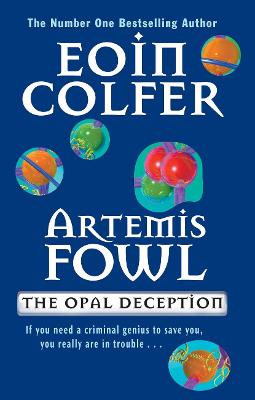Reviewed by Amber (The Literary Phoenix) on
When I read the Artemis Fowl series as a kid, The Opal Deception stood out as my favorite. I just LOVE Opal as a villain. She’s cheesy and incompetent and overstuffed and I love it. In many ways, she reminds me of Yzma from The Emperor’s New Groove – filled with evil plots and intentions, but surrounded by unhelpful minions and plans that exceed her abilities. Basically, someone who is too smart for her own good and makes a mess of things.
The Opal Deception excels in other ways for me – for one, we get a partnership between Butler and Mulch, which just seems so unlikely and hilarious to me. These two characters could not be more different. This is something Eoin Colfer really excels at – his characters will usually split into teams, and they are always entertaining.
The other pairing, of course, is Artemis and Holly. Colfer manages to keep these two fresh by inserting outside elements in each book that affect their relationship. In The Eternity Code, Artemis and Holly were a well-polished team, but through most of The Opal Deception, Artemis is struggling to recover his memories of the faeries. We have two parallel plots here – Artemis’s struggle to realign himself and decide what path he is going to follow, and of course the whole stopping the villain thing. I like them both, and I think they go hand-in-hand very well, with Opal serving as a mirror to what Artemis may become.
It is also in The Opal Deception that we start to see the story growing up a little. The first three novels in this serious are middle grade, but here, we begin the slow descent into YA. The series takes the reader into Artemis’s late teens, and choices he makes in The Opal Deception and its following The Lost Colony shape the rest of the series.
Personally, I still really liked this one, but I can see why others may remain generally unimpressed. Taking a middle grade series into the YA world isn’t easy, and the transformative years can be particularly difficult to maintain. I appreciate the way Colfer took the plot a step up for this novel, and all the possibility implied to come at the ending.
Reading updates
- Started reading
- 2 November, 2018: Finished reading
- 2 November, 2018: Reviewed
- Started reading
- Finished reading
- 2 November, 2018: Reviewed
